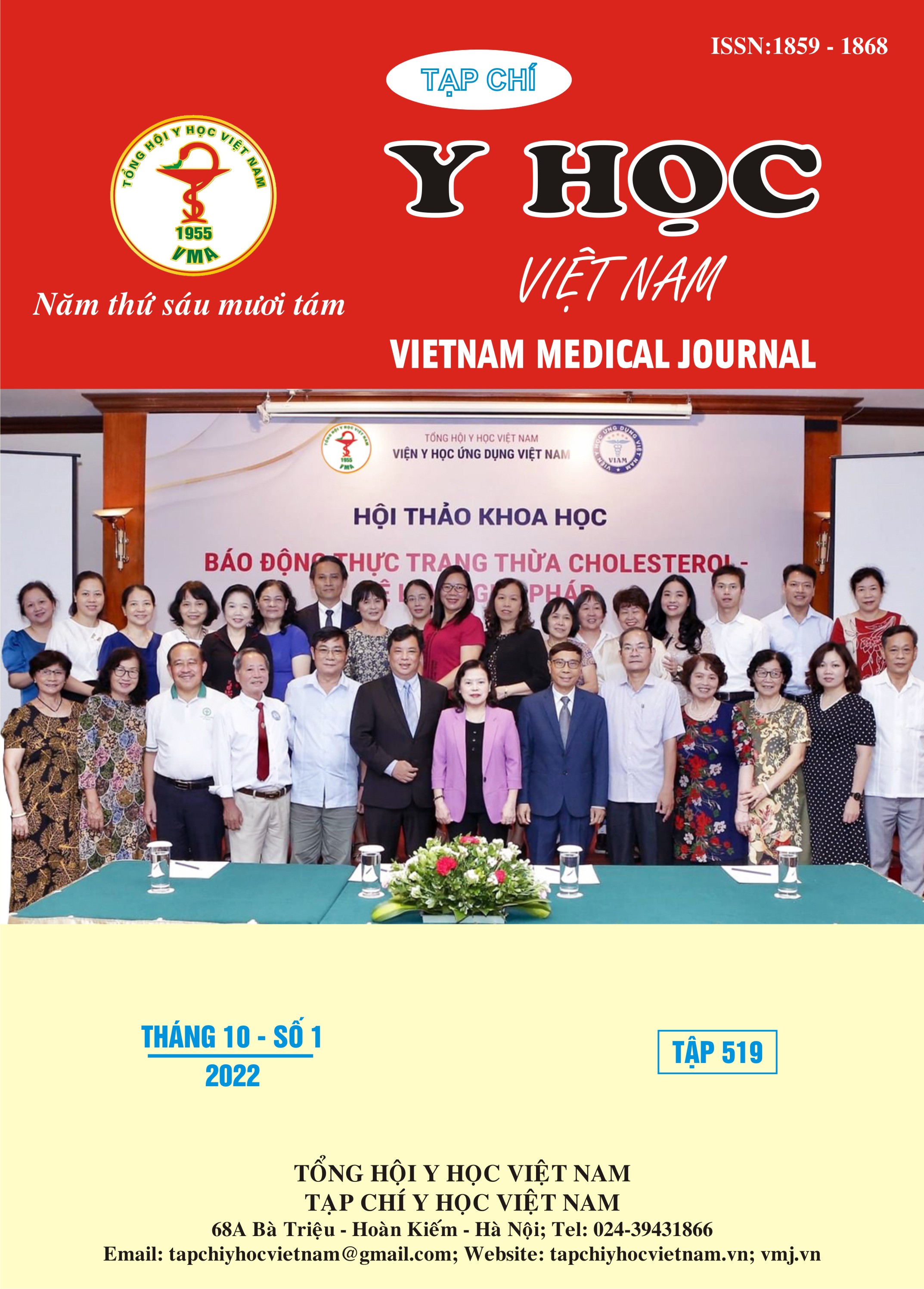ASSESSMENT OF THE RELATIONSHIP BETWEEN ACUTE KIDNEY INJURY WITH SOME RISK FACTORS OF PATIENTS TREATED IN THE INTENSIVE CARE UNIT OF PHU THO PROVINCE GENERAL HOSPITAL
Main Article Content
Abstract
Objective: Evaluation of the relationship between acute kidney injury and some risk factors in patients treated in the intensive care unit. Subjects and methods: A prospective, descriptive, longitudinal study on 273 patients treated at the ICU of Phu Tho Provincial General Hospital from October 2021 to June 2022. Results: The mean age of patients with acute kidney injury was higher than that of patients without acute kidney injury (58.61 ± 17.88 versus 52.28 ± 18.37, p<0.05). Elderly patients ≥ 65 years old had a 10.34 times higher risk of developing acute kidney injury compared with patients under 65 years old (95% confidence interval: 1.98 - 39.22 with p < 0. 05). Patients with SOFA scores above 15 at the time of admission have a higher risk of acute kidney injury than patients with SOFA scores below 15, which is 7.87 times (p < 0.05). Patients with rhabdomyolysis have a 2.45 times higher risk of acute kidney injury than patients without rhabdomyolysis (p<0.05). Patients with shock, MAP < 65 mmHg, CVP < 8 cm H2O at the time. hospitalized have a higher risk of acute kidney injury than the rest of the subjects, respectively, 4.41; 5.01 and 8.27 times, the difference is statistically significant (p < 0.05).Patients with hemoglobin less than 90 g/L at the time of admission have a higher risk of acute kidney injury. patients with HST ≥ 90g/L 7.02 times (p < 0.05). Patients with acute kidney injury have a 4.14 times higher risk of death than patients without acute kidney injury (95% CI: 1.38 - 16.2 with p < 0.05). Conclusion: Risk factors that made increase the risk of morbidity and prevalence are: Age ≥ 65 years, SOFA score > 15 points, rhabdomyolysis, SBP < 65 mmHg, CVP less than 8cm H2O, HST amount <90g/L is valuable for predicting mortality in patients treated in ICU.
Article Details
Keywords
Acute kidney injury - AKI, Risk Factor
References
2. Huỳnh Quang Đại và cộng sự. (2018). Tổn thương thận cấp do nhiễm khuẩn huyết tại khoa hồi sức tích cực - Tạp chí y học thành phố Hồ Chí Minh.
3. Kellum JA, Lameire N, Aspelin P, et al. Kidney Disease: Improving Global Outcomes (KDIGO) acute kidney injury work group: KDIGO clinical practice guideline for acute kidney injury. Kidney Int Suppl. 2012;2(1):1-138.
4. Stahl K., Rastelli E., Schoser B. A systematic review on the definition of rhabdomyolysis. J. Neurol. 2020;267:877–882.
5. M. Singer (2016), "The Third International Consensus Definitions for Sepsis and Septic Shock (Sepsis-3)", Jama. 315(8), 801-10.
6. Đặng Thị Xuân (2017), Nghiên cứu áp dụng phân độ RIFLE trong đánh giá mức độ, tiến triển, tiên lượng tổn thương thận cấp trong hồi sức, Luận án Tiến sĩ Y học, Trường Đại học Y Hà Nội. .
7. Bagshaw SM (2008), “A multi-centre evaluation of the RIFLE criteria for early acute kidney injury in critically ill patients”, Nephrol Dial Transplant, 23, pp. 1203–1210. .
8. Lại Duy Nhất (2020), Nghiên cứu tổn thương thận cấp ở bệnh nhân đa chấn thương, Luận văn thạc sĩ y học, Học viện Quân y.
9. S. Uchino (2005), “Acute renal failure in critically ill patients: a multinational, multicenter study”, Jama. 294(7), 813-8.


